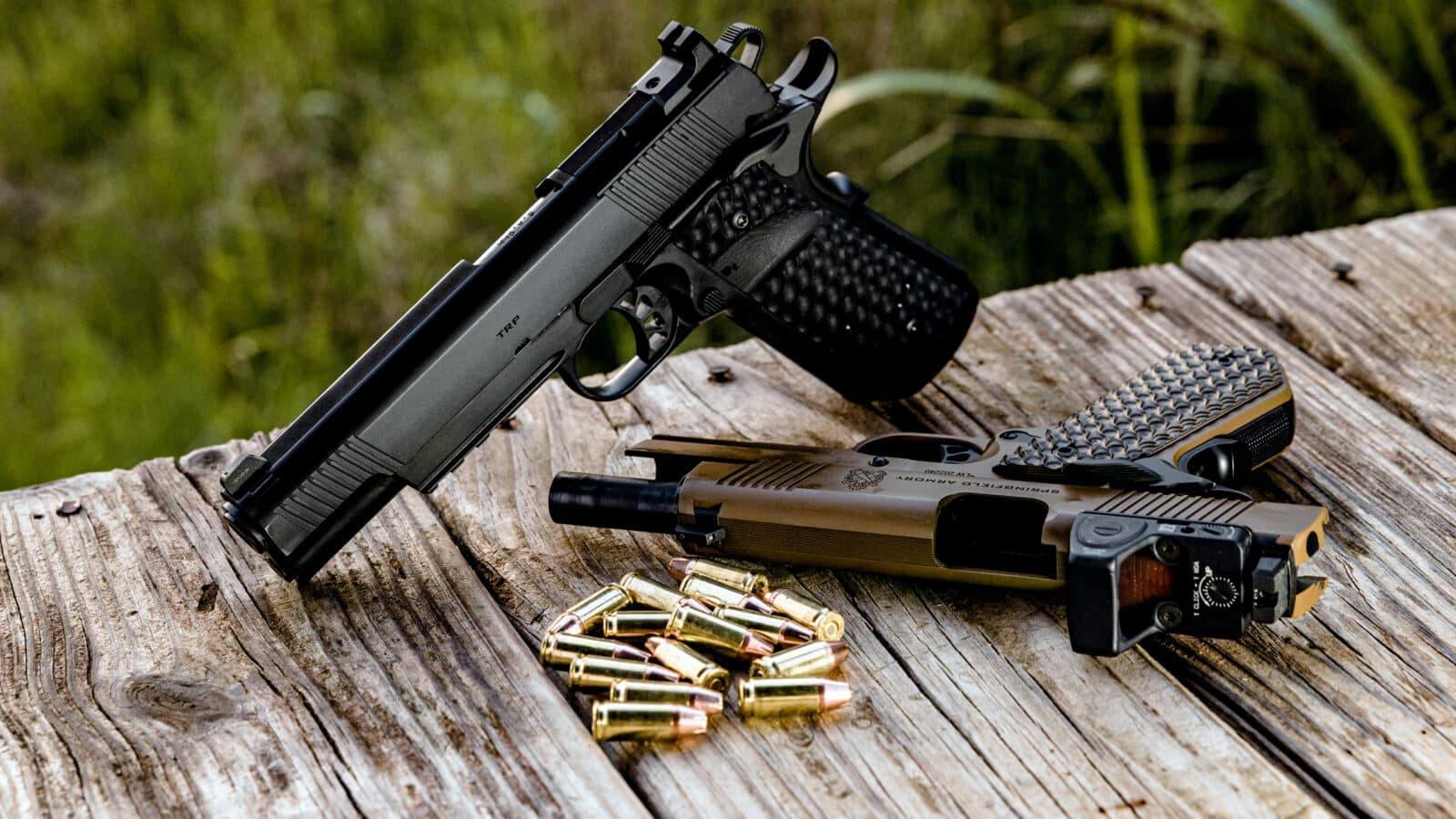Smith & Wesson Model 10 Classic: Classic Gun Test

A blast from the past: the medium/K-frame revolver known as the Smith & Wesson Model 10. The original Military & Police (M&P) has been in almost continuous production in one form or another since 1899. Building on this legacy, Smith & Wesson merges the past and present of the Model 10 with the new “Classic.”
Smith & Wesson Model 10 Classic: A History Defined
Known as the .38 Hand Ejector First Model, it was referred to as the Model 1899. It was chambered for the new .38 S&W Special cartridge. This cartridge was an improvement on the .38 U.S. Service Cartridge (.38 Long Colt) that had a 150-gr. lead bullet propelled by 18 gr. of black powder.
The new load had a 158-gr. lead bullet powered by 21.5 gr. of black powder. It was able to penetrate eight and one-half pine boards that were 7/8 inch thick. This bested the old service load by 2 inches.
Advertisement — Continue Reading Below
Later loads transitioned to smokeless powder, and the typical Police Service Cartridge drove the 158-gr. lead RN bullet to about 755 FPS.
Refining the K-Frame Revolver
The M&P went through several engineering changes as it evolved into the Second Model of 1902, Second Model First Change, Model of 1905, and Model 1905 First – Fourth Changes. The last change spanned the era from 1915-1940.
Advertisement — Continue Reading Below
This revolver became the “Bread & Butter” for S&W. Most of the factory production was devoted to this model as large purchases were made by the U.S. Military, law enforcement, and the British government. During WWII, the M&P became the Victory Model with a military-grade blue finish. It later changed to a Parkerized finish and smooth walnut service stocks.
In 1942, the Victory Model introduced a hammer block safety device in the action. Commercial production resumed in Sept. 1945. In 1948, a new “short action” was announced, which has remained in use until today. In 1957, S&W began assigning model numbers to their handguns, and the M&P became the Model 10.
Besides the tapered or “pencil” barrel, S&W has also produced the Model 10 with a straight heavy barrel. All the variations since 1899 have had fixed sights. The different engineering changes stretch from the Model 10-1 in 1957 to the Model 10-15—the subject of this article.
Advertisement — Continue Reading Below
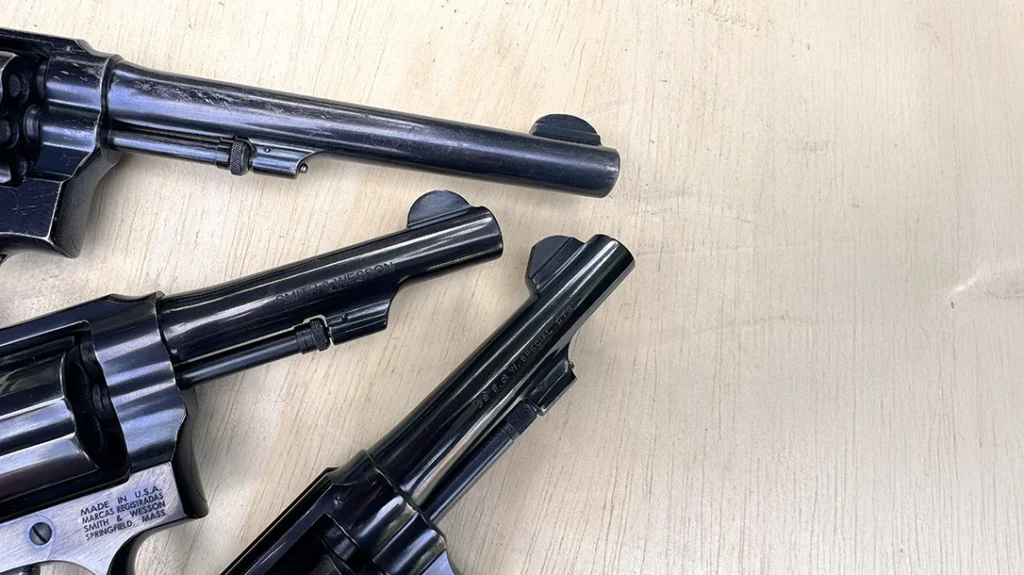
The Model 10 Classic “No Lock”
Currently, S&W offers the Model 10 with a 4-inch heavy barrel, a round-butt grip frame, and checkered walnut Magna stocks. At the 2025 SHOT Show, S&W unveiled three new “Classic” revolvers: the J-frame Model 36, the K-frame Model 10, and Model 19. One distinguishing feature of the new Classics is that they do not have the internal lock that is common to S&W revolvers since 2001.
I have history with the Model 10 as my service revolver in my early years as an LEO. So, I decided to request one of the new Classic models from S&W for a test and evaluation (T&E).
Advertisement — Continue Reading Below
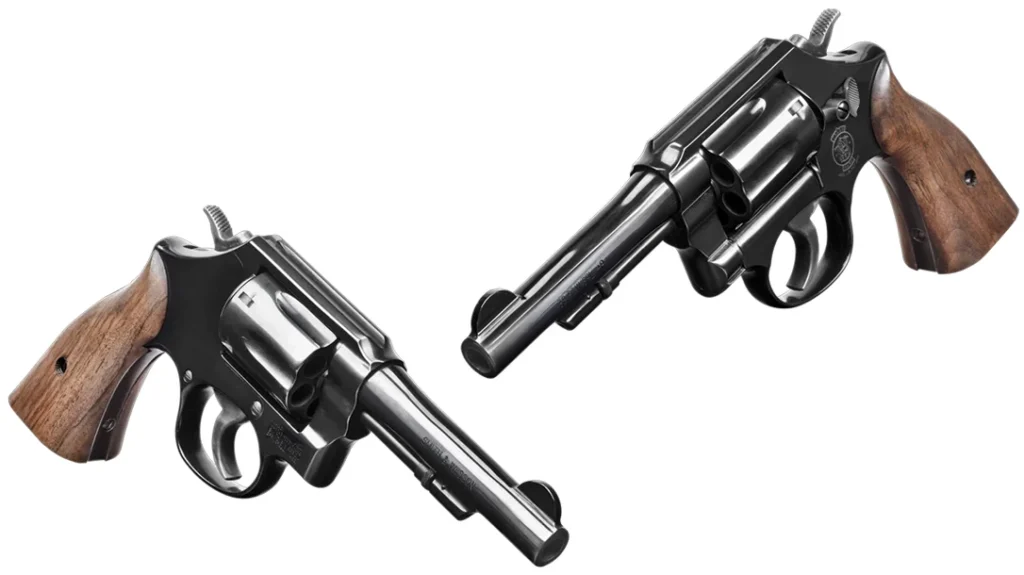
The new Classic Model 10 has a lot of the traditional features “Boomers” like me will appreciate. It has a 4-inch tapered or “pencil” barrel with the small underlug that serves as a cylinder locking point at the front end of the ejector rod. The ejector rod harkens back to the 1920s-era Model 1905, with its “mushroom-head” ejector rod and half-moon front sight.
The rear sight is a fixed square notch in the frame top-strap. It has a polished blue finish with a color case-hardened hammer and trigger. Unlike older Model 10s, the newer iterations have a frame-mounted firing pin in place of the firing pin riveted into the hammer nose.
Advertisement — Continue Reading Below

The front of the cylinder between the flutes is beveled, and the cylinder release or thumb latch mimics that of the old Model 1905. Configured like the Magna stocks, those on the Classic give a nod to the Victory Model. They are crafted from high-grade walnut, with no checkering or silver S&W medallions. These stocks are made for S&W by Tyler Gun Works.
What You Expect from Smith & Wesson
Looking the Model 10 Classic over from stem to stern, it displayed all the characteristics Smith & Wesson is known for. The finish was flawless, and metal-to-metal and wood-to-metal fit were first rate.
Advertisement — Continue Reading Below
My test gun’s trigger was smooth-faced with no sharp edges, and 0.37 inches wide. The hammer has a deeply checkered spur for good thumb purchase. Single action (SA) pull weight according to my Lyman Trigger pull Gauge was 5 lbs. 8 oz., and the double action (DA) pull was 9 lbs., 5 oz. The SA pull was crisp and the DA pull smooth, with no stacking.
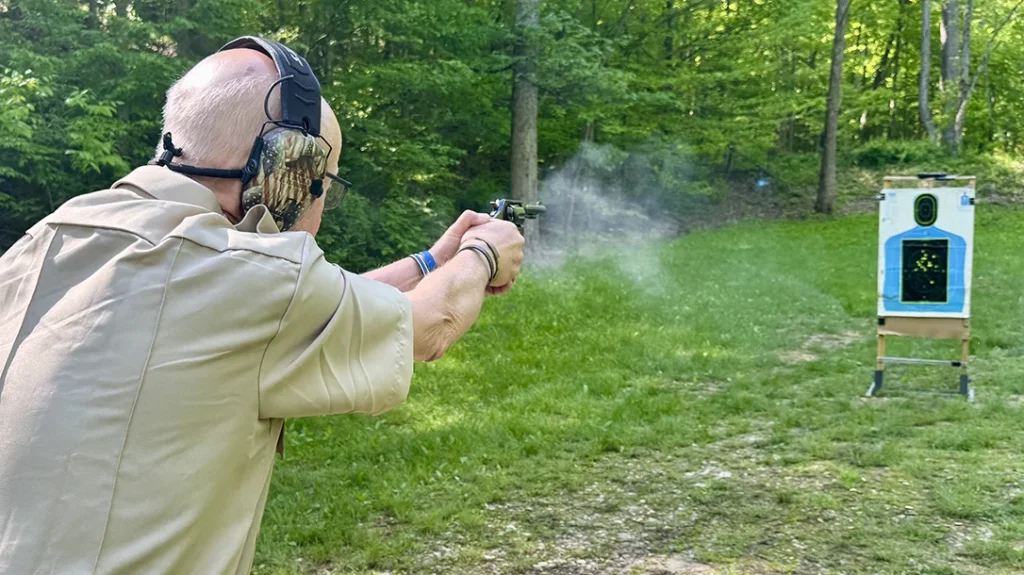
One other departure from older Model 10s is the cylinder stop. For many years, it was a separate part pressed into the left side of the frame, just above the trigger. On the newer S&W wheelguns, like the test gun, it is integral with the frame, extending down from the left-side recoil shield.
Keeping Things Retro
I wanted to use .38 Special cartridges that represented both “back-in-the-day” and currently available ammunition. There’s nothing more .38 Special than what they used to call Mid-Range Wadcutter ammunition.
My choice was Doubletap loads that have the traditional 148-gr. full wadcutter bullet. They make nice round holes in paper targets or anything else.
From Fiocchi was a standard pressure 158-gr. JHP. The jacket extends to the edge of the bullet nose, and has striations to aid in expansion.
For a 158-gr., all-lead bullet, I went with HSM Cowboy Action Cartridges. The bullet is round-nose with a flat point and has a velocity akin to the old Police Service loads.
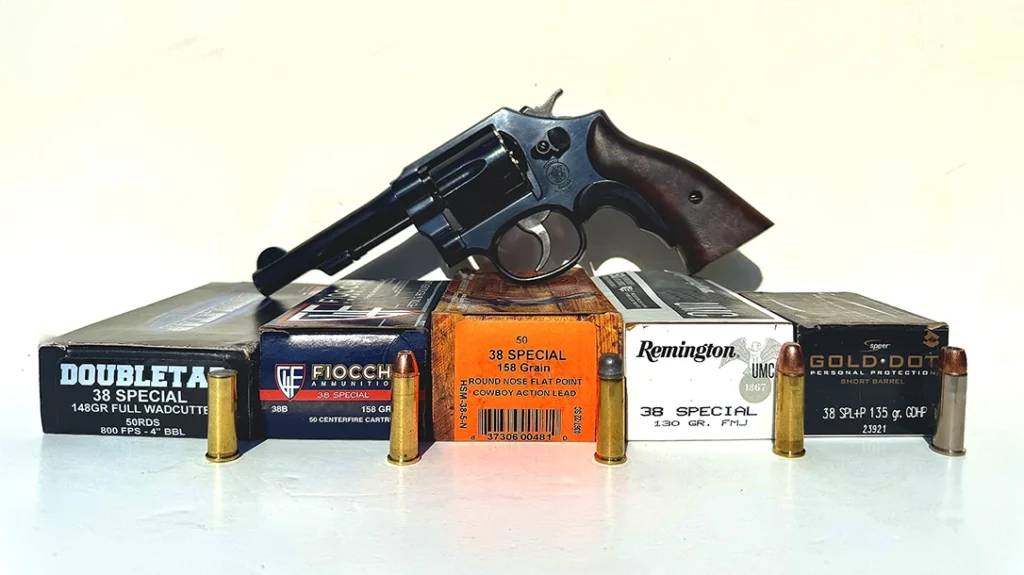
For an all-purpose cartridge, I chose the Remington-UMC load with a 130-gr., FMJ flat-nose bullet.
As the Model 10 Classic is rated for +P ammo, I selected the Speer Gold Dot that has a 135-gr. GD-HP bullet.
My Past Prepared Me for The Present Model 10
Some 43 years ago, I was leaving the Jefferson Parish Sheriff’s for the U.S. Border Patrol. An old captain on the SD took me into his office, opened a file cabinet drawer, and took out an old River Belt and Border Patrol holster. He told me that these were his when he was in the USBP, and he’d like me to have them.
The belt and holster seen in this article are the same rig.
The holster was made by S.D. Myres in El Paso, Texas. I’m told that Border Patrol Firearms Instructor and Pistol Team member Charles Askins designed it. It has a simple snap-fastened safety strap to retain the revolver. The cartridge loop slide I used in the combat shoot portion of the T&E was one I used in the Border Patrol.
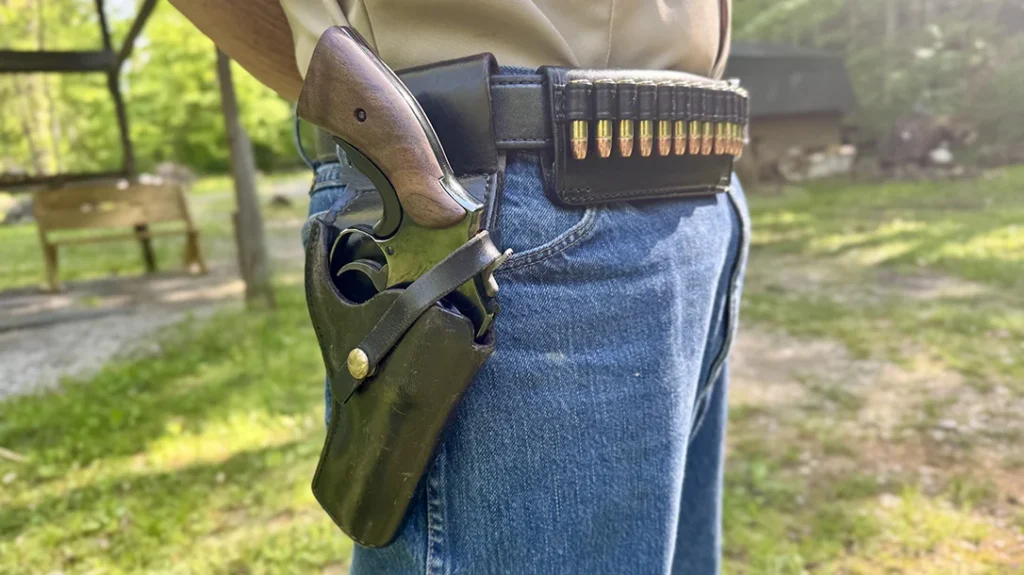
I wasn’t able to use the old River Belt as my waistline has gone down a bit. So, I substituted a thick leather Daltech Force Bull Belt.
The S&W K-frame with the Magna-type stocks leaves a gap behind the trigger guard that doesn’t allow the kind of hold I prefer. It was an easy fix with a grip adapter from B.K. Grips.
You remove the stocks and put the adapter on the front of the grip frame; it’s held in place by two copper tabs. Then, reinstall the stocks, which hold the adapter in place. It makes a perfect fit for my medium-sized hand.
Shooting the Model 10 Classic
In most cases, I begin a T&E with the accuracy potential evaluation. This time, I did things in reverse, as I had an opportunity to use an outdoor facility where I could draw and shoot from a holster; something that’s not allowed at my indoor range.
I wanted to draw the Model 10 Classic from that S.D. Myres rig, and reload 2x2x2 from the cartridge loop slide; just like I learned in 1982. As I had a good supply of the Remington-UMC ammo, I elected to use it for the course.
I did shoot a cylinder full at a bullseye target at 15 yards to check the sights for point of aim (POA) and point of impact (POI). Looks like I’d be using a 6 o’clock hold. My target was a B-27 type silhouette, with Shoot-N-C scoring areas covering center-mass and the head.
Skinning That Smokewagon
With the Model 10 Classic fully loaded and my cartridge loops filled, I stepped to the 3-yard line. My son, who was helping me and taking photos, shouted, “He has a gun!” That was my signal to engage.
I drew from the snapped holster, assumed a point-shoulder stance, and fired six shots, strong-hand only. My support hand was covering my chest. I reloaded, transitioned to my support hand, and fired six more shots in like manner. Another reload. I did a 360° assessment, then worked the revolver back into the holster and re-snapped it.
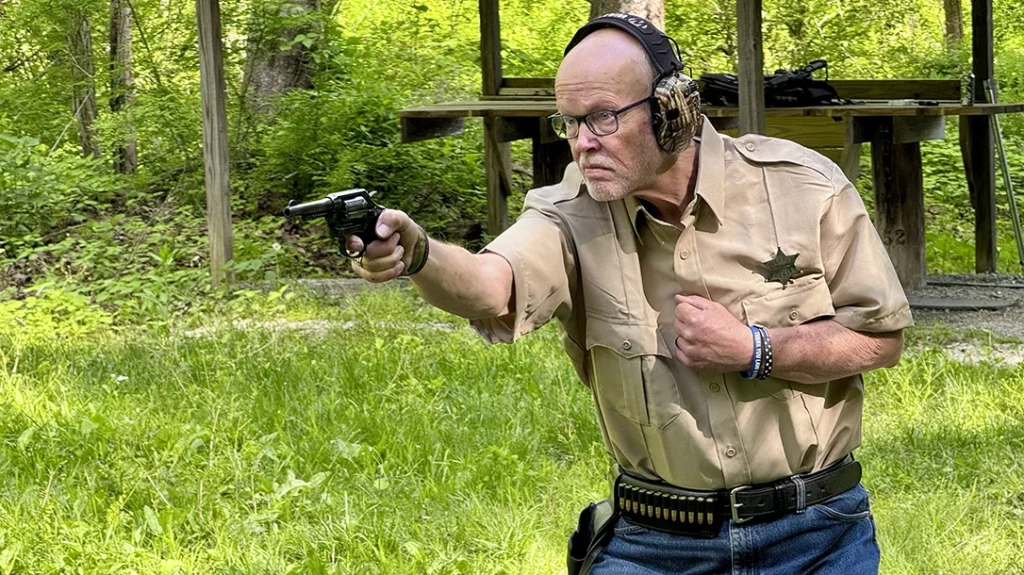
Back to 7 yards, and on signal, I drew and assumed an isosceles stance with a two-handed hold. Using the sights, I fired a double-tap. I then went to high-ready, assessed my target, and fired twice more; I then repeated the process. I punched out the empties, reloaded, did my assessment, and re-holstered.
At the same distance, I did a body armor or failure drill. This was 2 shots center-mass and one to the head, and was done twice.
Moving back to cover at 15 yards, I reloaded and on signal drew and fired two shots standing, left-side barricade. Then I fired two shots standing, right-side barricade. Finally, two shots kneeling, right-side barricade.
For the 30-round course, I scored 287/300-7X, with nothing outside the 9-ring. Everything ran just fine.
Model 10 Classic Performance
At the indoor range a couple of days later, I set up my Garmin Xero C1 Pro chronograph on the shooting lane bench and sent a bullseye target down to the 15-yard line. I thought I’d get bullet velocity figures and see where the POA/POI was with each of the five test .38 Special test cartridges. You can see the velocity data in the performance table (below).
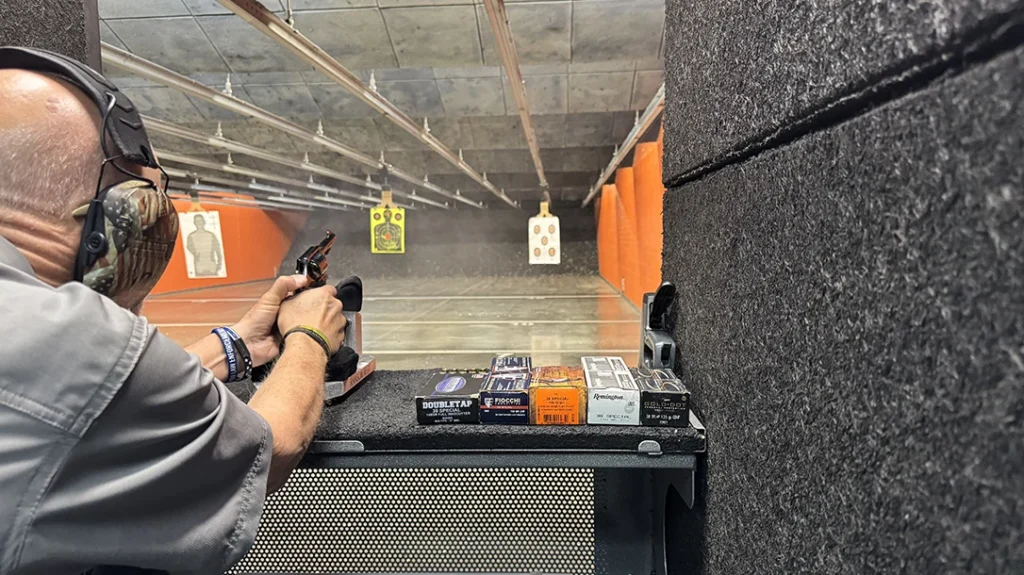
After that, I put my Ransom Steady Rest on the bench, sent a 5-bullseye target sheet down to 15 yards, and shot three 5-shot groups, single action, with each of the test loads. My best 5-shot cluster measured 1.82 inches and was made using the Doubletap wadcutters.
None of the best groups went over 2.5 inches, and the total average of all groups was just 2.48 inches. I’d had some doubts about the half-moon front sight, but it gave a good sight picture.
To make this a real “retro-roundup,” I brought along my 1962-era 4-inch Model 10-5, which is in like-new condition. It also has a grip adapter, and I pitted it against the Model 10-15 Classic. I decided to use the HSM 158-gr. RNFP cartridges. They are close to what would’ve been carried in the Model 10-5 years ago.
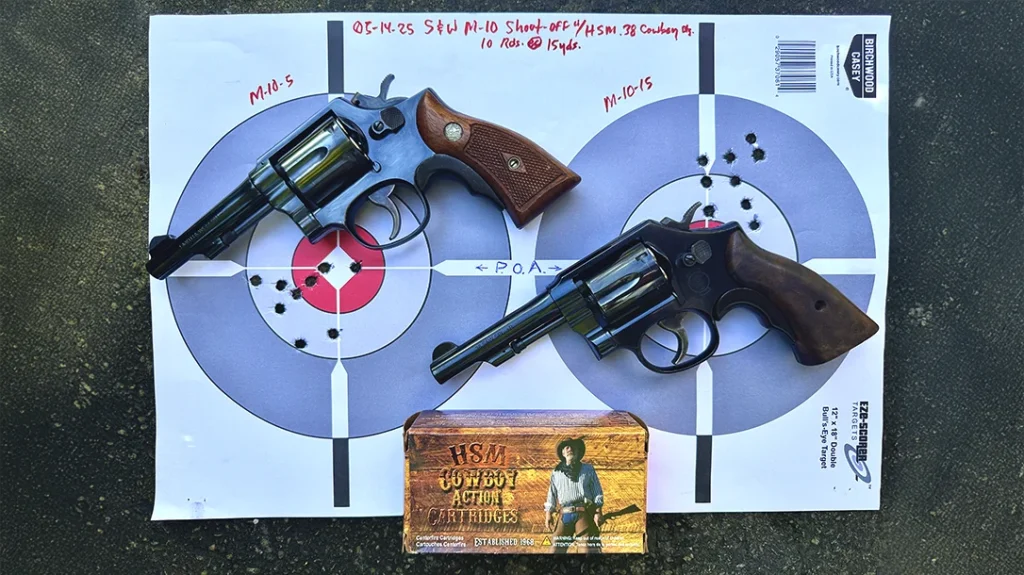
A double bullseye target was sent down to 15 yards, and 10 rounds of the HSM loads were shot from each gun, single action, from the bench. The old-timer shot a little low and left, with a 2.42-inch group. The Classic shot a bit high and right, with a 2.11-inch group.
A 3/10-inch group difference left me to proclaim the Classic the winner, but only by a slim margin.
Back to the Good Old Days
This was one of the most enjoyable T&Es I’ve done in a while. It took me back to the “Good Old Days” and proved to me that Smith & Wesson is still capable of producing as quality a revolver today as it did decades ago.
It was nice doing a gun test where nothing went wrong. I got to use some old gear from my past, and I have serious doubts that S&W will be getting the test gun back!
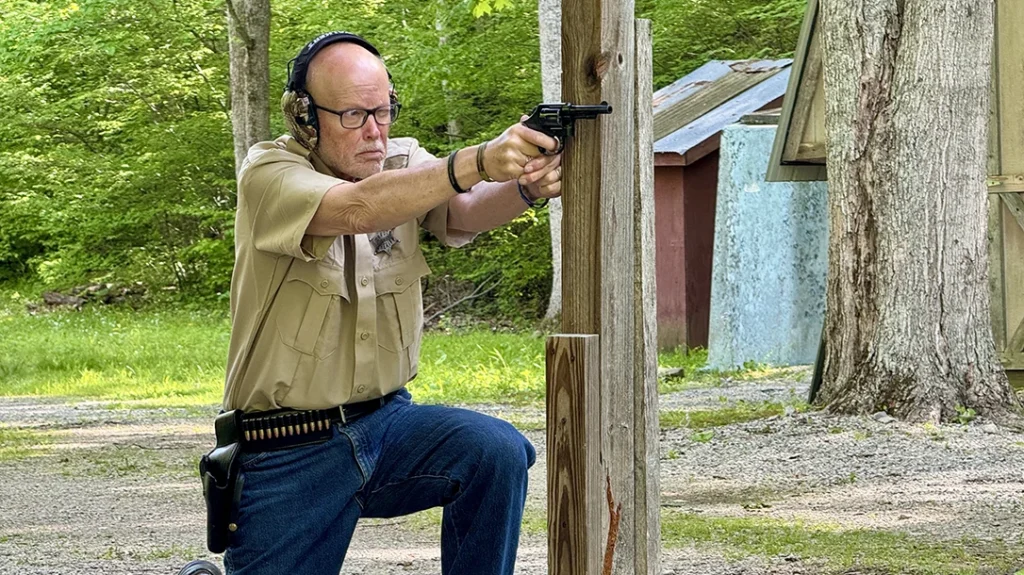
Smith & Wesson Model 10 Classic Specs
| Mechanism | Traditional DA/SA revolver |
| Caliber | .38 Special +P |
| Capacity | 6 cartridges |
| Barrel | 4.0 in. |
| Overall Length | 8.87 in. |
| Empty Weight | 34.6 oz. |
| Sights | Half-moon blade front, fixed square-notch rear |
| Finish | Blue |
| Stocks | TGW walnut Magna style |
| MSRP | $979.00 |
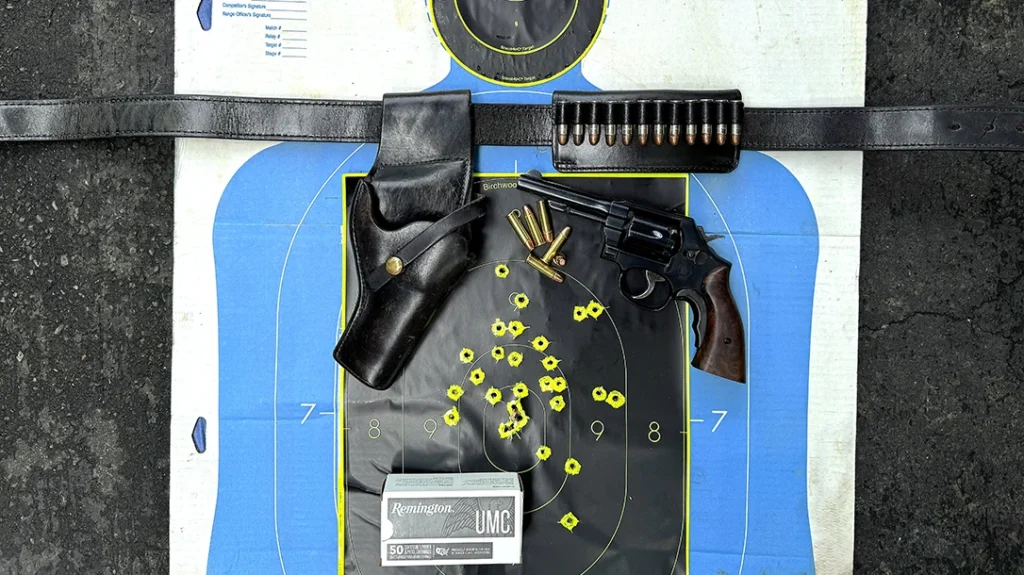
Performance
| Doubletap Ammunition 148 gr. Lead WC | |
| Average Velocity | 756 FPS |
| Best Group | 1.82 inches |
| Average Group | 2.28 inches |
| Muzzle Energy | 190 FPE |
| Fiocchi Ammunition 158 gr. JHP | |
| Average Velocity | 728 FPS |
| Best Group | 2.45 inches |
| Average Group | 2.73 inches |
| Muzzle Energy | 186 FPE |
| HSM “Cowboy” 158 gr. Lead RNFP | |
| Average Velocity | 763 FPS |
| Best Group | 2.34 inches |
| Average Group | 2.37 inches |
| Muzzle Energy | 204 FPE |
| Remington-UMC 130 gr. FMJ | |
| Average Velocity | 759 FPS |
| Best Group | 2.38 inches |
| Average Group | 2.55 inches |
| Muzzle Energy | 166 FPE |
| Speer Gold Dot 135 gr. GD-HP +P | |
| Average Velocity | 914 FPS |
| Best Group | 2.21 inches |
| Average Group | 2.46 inches |
| Muzzle Energy | 250 FPE |
NOTE: Bullet weight measured in grains, velocity in feet per 15” from the muzzle by a Garmin Xero C1 Pro chronograph, and accuracy in inches for three 5-shot groups at 15 yards. FPE based on bullet weight and velocity.


